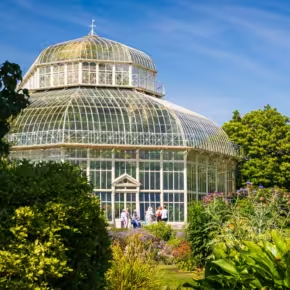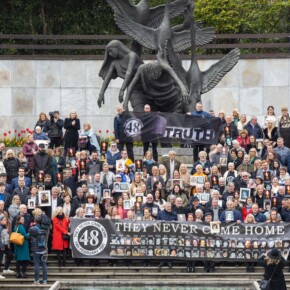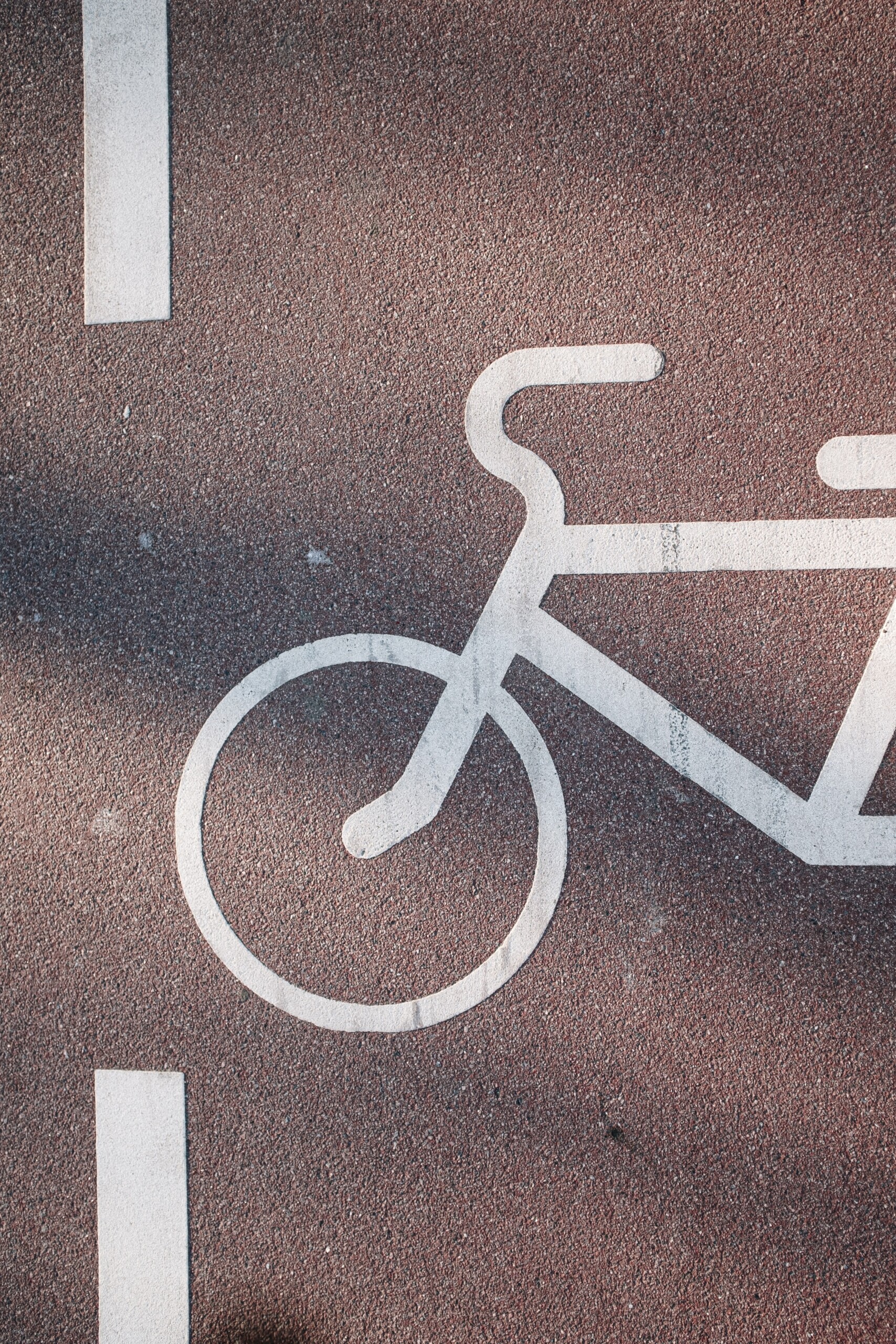Lord Mayor unveils new ‘Smithfield Utah’ teapot sculpture for Smithfield Square
Padraig Conlon 18 Oct 2021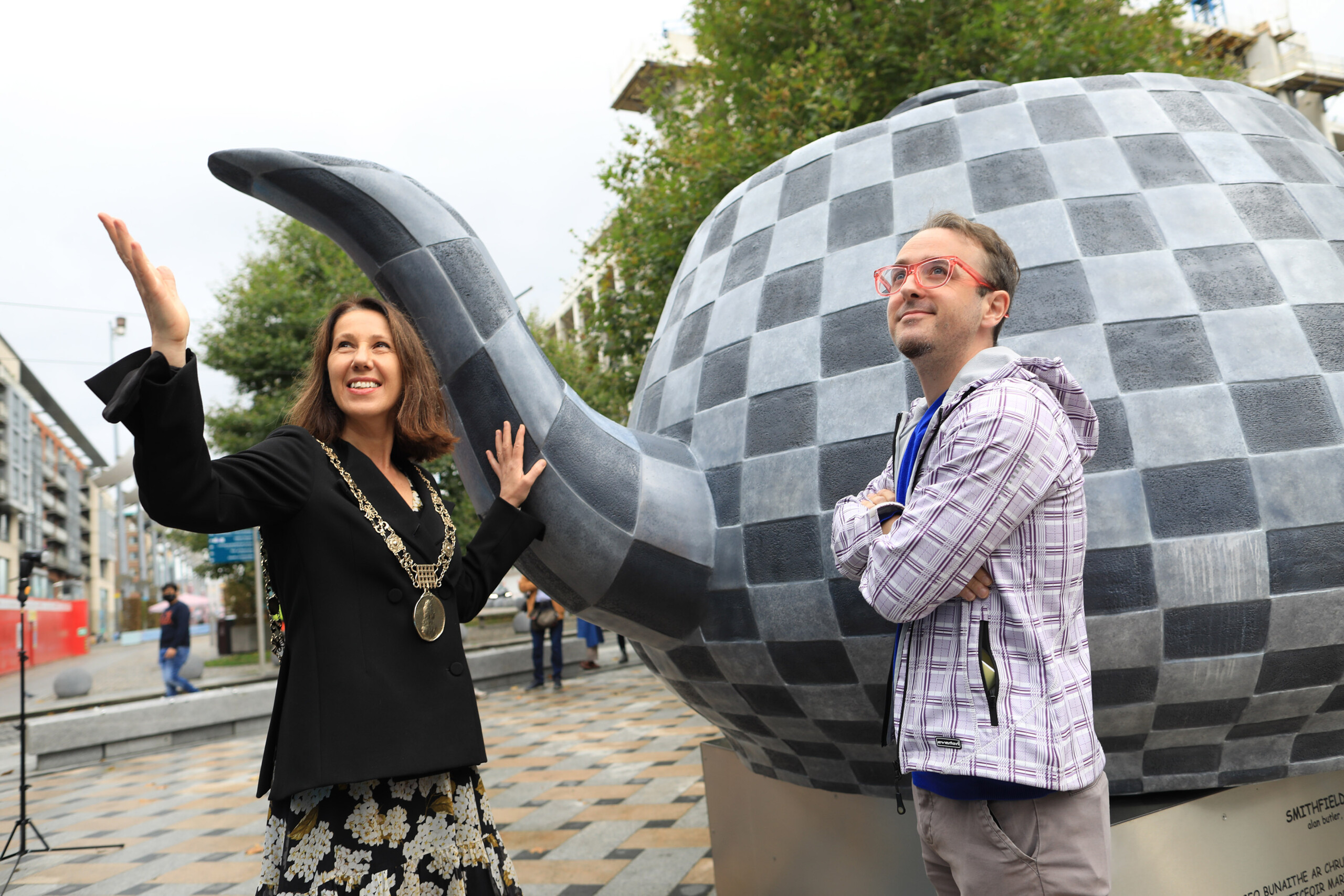
The Lord Mayor of Dublin, Alison Gilliland, today formally unveiled ‘Smithfield Utah’ by artist, Alan Butler, the second of six new sculptures as part of Dublin City Council’s ‘Sculpture Dublin’ initiative.
‘Smithfield Utah’ takes the form of a giant, bronze teapot.
It is based on the shape of the Utah Teapot – an iconic, ‘virtual’ teapot form, designed by mathematician Martin Newell in Utah in 1975.
The sculpture brings together traditional and contemporary references to celebrate the diversity of modern Smithfield and the rapid growth the area has experienced the last few years.
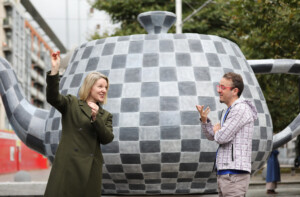
Picture shows artist Alan Butler and Sculpture Dublin Programme Director Karen Downey
It has been created by artist Alan Butler following a competitive commissioning process that asked artists to consider how public art can help define a space and enable a deeper relationship between residents, workers, tourists, commuters, and a city-centre neighbourhood.
The ‘Smithfield Utah’ teapot is a symbol of Irish warmth and connection between those who live, work, enjoy, and pass-through Smithfield.
It also references present-day Smithfield as a dynamic, creative industries hub and as a true cross-section of what makes Dublin great.
The area has retained the character of its community and history, while in parallel producing space for institutions that participate at global scales.
This combination of modernity and tradition really interested Alan Butler, who drew on the Utah Teapot’s own genesis in computer code as inspiration for the Smithfield sculpture. Before 3D computer graphics software was available the code was used to test visualisations of 3D designs.
The ‘Utah Teapot’ computer code has enabled breakthroughs in software development that help produce the physical and cultural spaces we inhabit today.
Speaking today at the unveiling, Lord Mayor of Dublin Alison Gilliland said, “It brings me great pride to unveil this second public artwork in the Sculpture Dublin series that is bringing great creativity and interest to those locations where these works are on display.
Smithfield Utah is an amazing example of the power of sculpture to speak to both a historic and contemporary way of Dublin life.
“I want to congratulate the artist, Alan Butler, who has created this sculpture. It captures the warmth, hospitality, and sense of community that exists in Smithfield and many other parts of Dublin city. But it does so in a manner that is both accessible and curious for those who view it.
“I hope that the local community and all those who come to Smithfield will pause, engage with and enjoy the sculpture and that it becomes a talking point for those that do. These sculptures are playing an important role in city life and I look forward to further unveilings as the series progresses.”
Commissioned artist, Alan Butler, said: “I am honoured and delighted to have been included in the Sculpture Dublin programme and to create this sculpture for the city. The task of conceiving a public artwork is always intimidating as it invites scrutiny from such a wide audience. My aim was to identify a form that can operate on as many scales as possible and create something widely engaging, while not resorting to clichéd public sculptural forms.
“I was specifically drawn to the Utah Teapot form due to its universality. It is intended to be enjoyed at any level that any audience member wishes to access it.”
Programme Director of Sculpture Dublin, Karen Downey, said; “The commission for Smithfield Square Lower was both exciting and challenging due to the significant change the area has undergone. Smithfield has a long and rich history, stretching back to the arrival of the Vikings, and moving from an agricultural marketplace to a centre of industry, creativity, and innovation in recent years. ‘Smithfield Utah’ acknowledges the diversity and dynamism of this site; its deep-rooted local traditions and its place in the centre of multi-cultural, globalised contemporary city.”



